The beauty of Indian jewelry lies in a wide variety of shapes and colors. Matching necklaces and earrings, rings for the toes, fantastic headpieces, noserings, necklaces for men, ornaments for the turbans, all modern or traditional – everything is allowed and widely worn. Not only are they decorative items, but they can also be accessories for a spiritual ceremony or serve as part of a classical dance performer’s outfit. The jewelry is emphasized by traditional clothing as well.
![]()
Sign up to my newsletter if you don’t want to miss articles like this in the future and would like to receive some free tutorials from me:
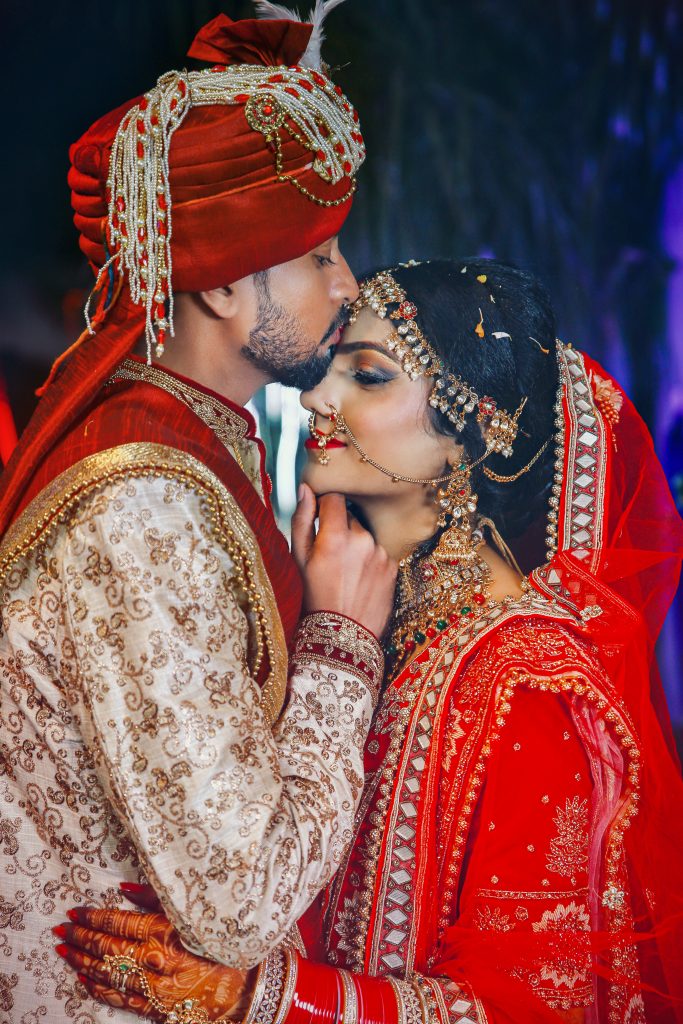
The history of Indian jewelry is united with the history of the country itself. And apart from historical references, also myths and romantic stories are associated with the jewels. As elsewhere, the rulers not only supported arts and crafts, but jewelry symbolized wealth, prestige and power for them as well. But even the poorest women have/had some earrings and bracelets.
In addition to the 5000 years old seals and coins found in the Indus Valley, also many amulets have been found among the ancient finds. At that time, India was the largest manufacturer and exporter of beads. They have already mined diamonds and invented the diamond drill. From the decoration technics – they used carving, engraved patterns and decorated small details with gold, aesthetically detailed and sophisticated. The jewelry demonstrated the endless creativity and excellent skills of the masters.

What makes a modern-styled jewelry Indian?
1/ Colours
…and an unbelievable combination of them! None of the pastel tones, but REAL pink+turquoise, yellow+green, gold+red, silver+blue+orange… Any combination would stand, I guess.
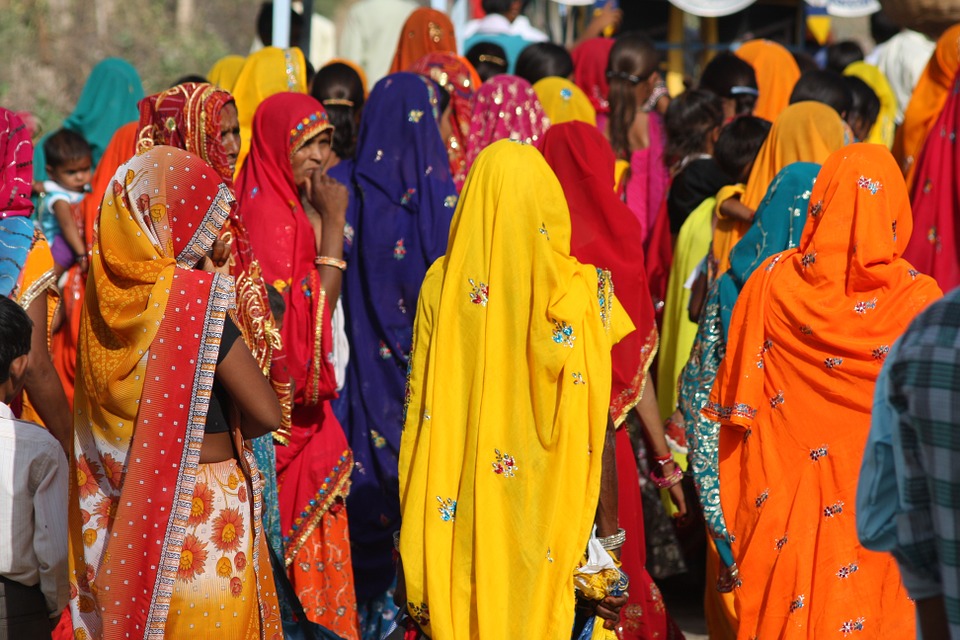
Combine turquoise with fuchsia, purple with green, orange with blue! And don’t forget to throw in some metallics, too. The Jaipur earrings, inspired by the ‘Hawa Mahal’ – Palace of Wind is a good example.
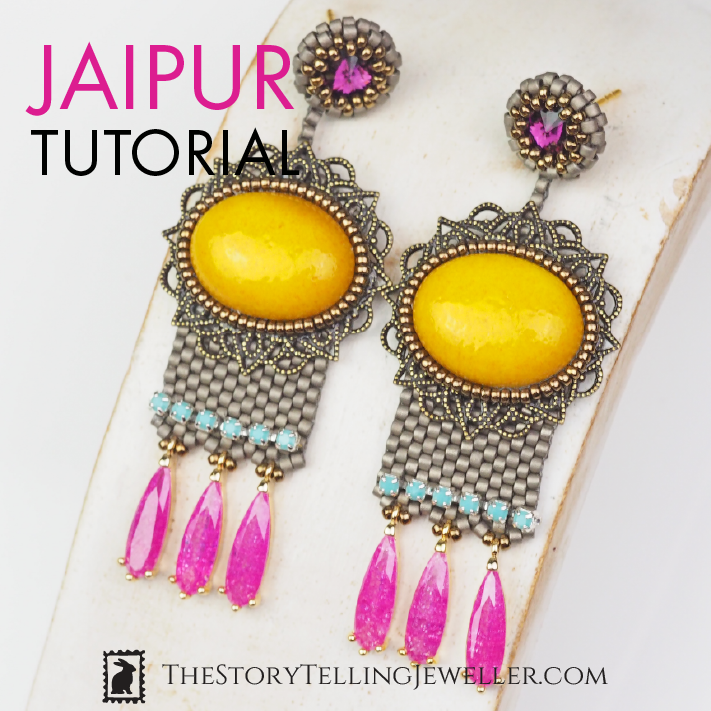

2/ Paisley motif
The paisley pattern is originally an ornamental textile design of Persia, using a teardrop-shaped form with a curved upper end. It became popular in the Westen world around the 18 -19th century, when imported from India in the form of Kashmir shawls.
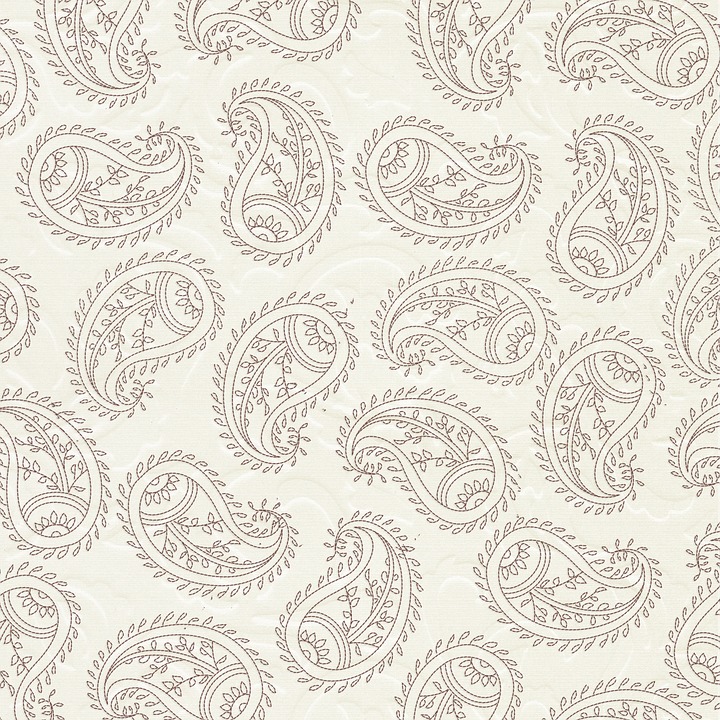
We are lucky beaders indeed! Now there are even paisley-shaped beads available, which I used as petals in my Poppy Fields necklace. The harsh red, yellow and the opalic green make this design explode!
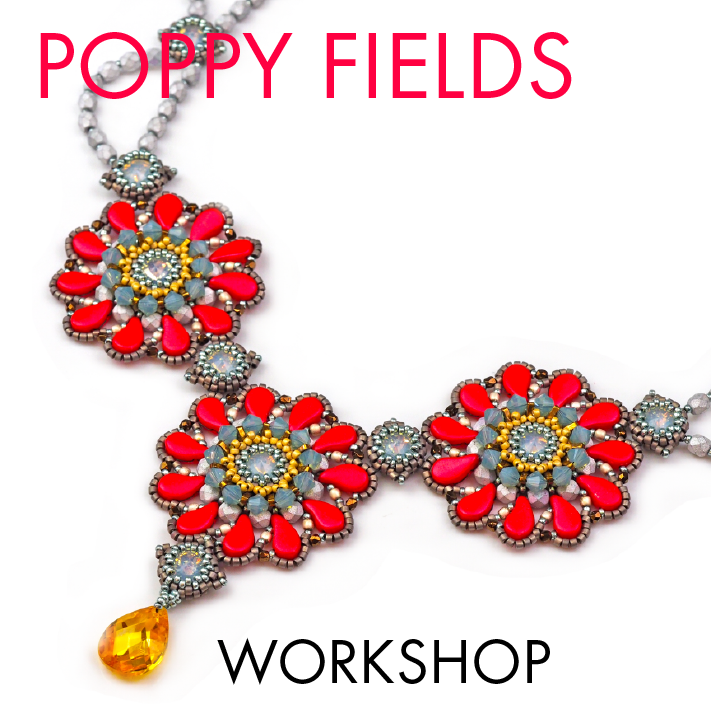

3/ Usage of filigrees and other metal components
Filigree is a delicate ornamental work of gold, silver, bronze or other metal wires. “The art may be said to consist in curling, twisting and plaiting fine pliable threads of metal, and uniting them at their points of contact with each other…” (wikipedia.org) Above all, the window-decoration of the Indian architecture reminds me the fine art of filigrees.
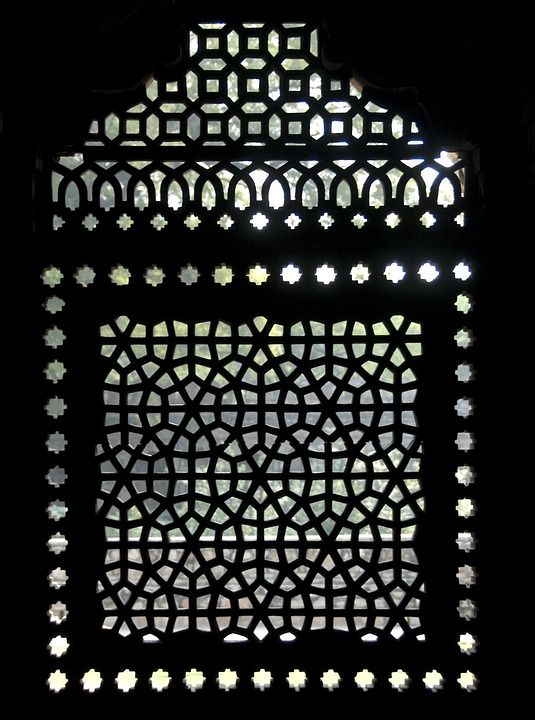
Using delicate metal filigrees in your beadwork is an easy way to add an oriental touch to it! You can use them in many different ways: as a base for a beaded motif, the connection between pieces of beadwork, or you can even glue them on the top to make the jewel look mysterious! Check out how I used a filigree in this brooch from ‘The Traveller’ collection!


4/ Usage of mirrors
Mirror work (also called shisha work) as part of the traditional outfits was adopted by Indian craftsmen and women from Iran. Nowadays is widely used and known as part of the Indian style, but only during the Mughal reign became a real part of it. Each region has a unique way of including mirrors in their handicrafts. Originally silver and tin, later thin coins, and sometimes even beetle wings were used as mirrors. In the early 20. century these were replaced by tiny pieces of broken glass. Circular, square, hexagonal and other forms are affixed to the fabric with a special cross-stitch.
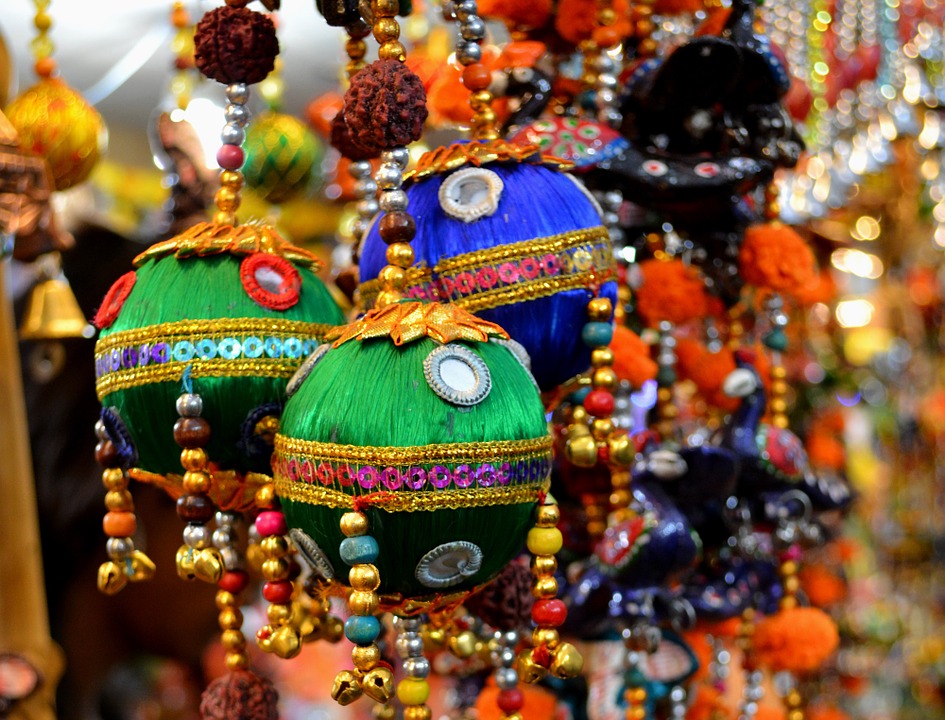
The ‘Mirror Oval‘ cabochon handmade by my friend Lenka inspired me to bead a wide bangle, with the ceramic being the focal point and the 2 mm round beads and the filigree component framing it in a way how a real mirror is surrounded by a metal frame. Click here for the article about the bangle and listen to the video broadcast where I tell you everything I know about beading a cuff bracelet like this.
![]()
Sign up to my newsletter if you don’t want to miss articles like this in the future and would like to receive some free tutorials from me:
5/ Floral pattern
Flowers are a close part of the culture, therefore floral patterns decorate everything from buildings to saris. Using different styles e.g. stencil drawings or stone carving, flowers can be seen everywhere from palaces via fortresses to bars.
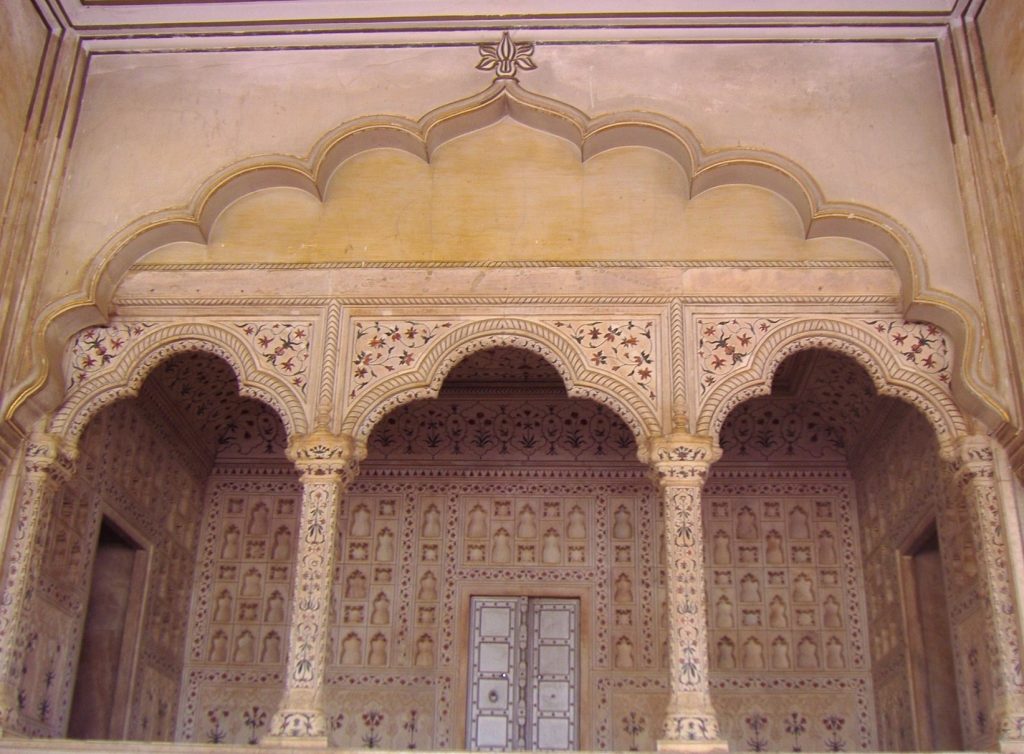
The Wildflower motif is quick and easy, you can bead it in many different combinations in no-time! It looks very nice when glued on a metal base, for example in the middle of a filigree.

5/ Tassels
Do you have a favorite motif that you want to make “Indian?” Attach a tassel to the bottom! Tassels can be made of many different materials: fabric, metal or even beads!
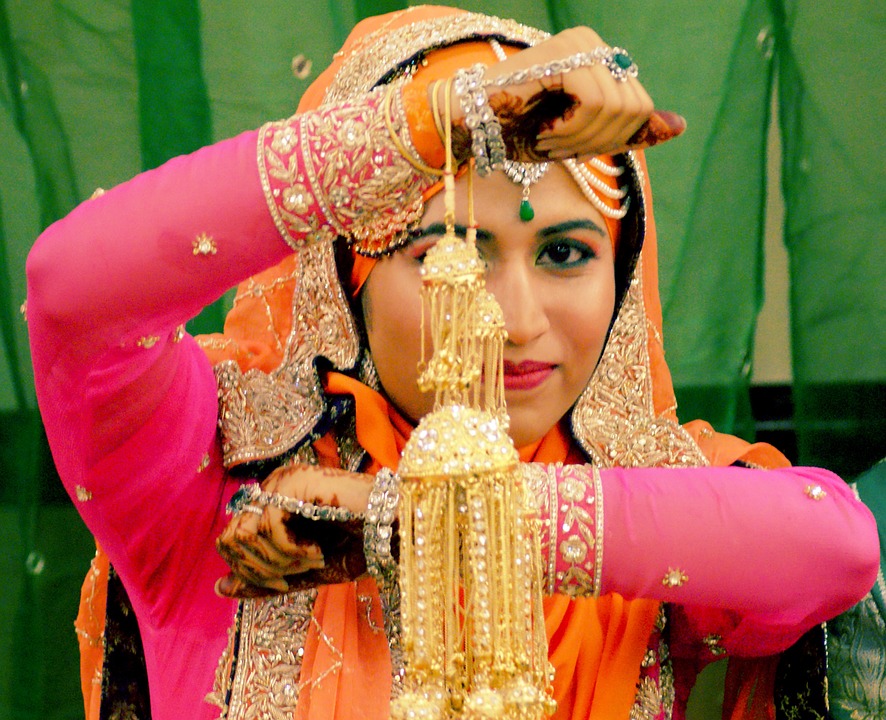
Here you can find an easy and quick tassel-tutorial. They look great on their own, too, as earrings or as a pendant on a longer necklace.
 6 / Cabochons: glass and semi-precious!
6 / Cabochons: glass and semi-precious!
The more – the better! Indian accessories usually contain lots of stones.
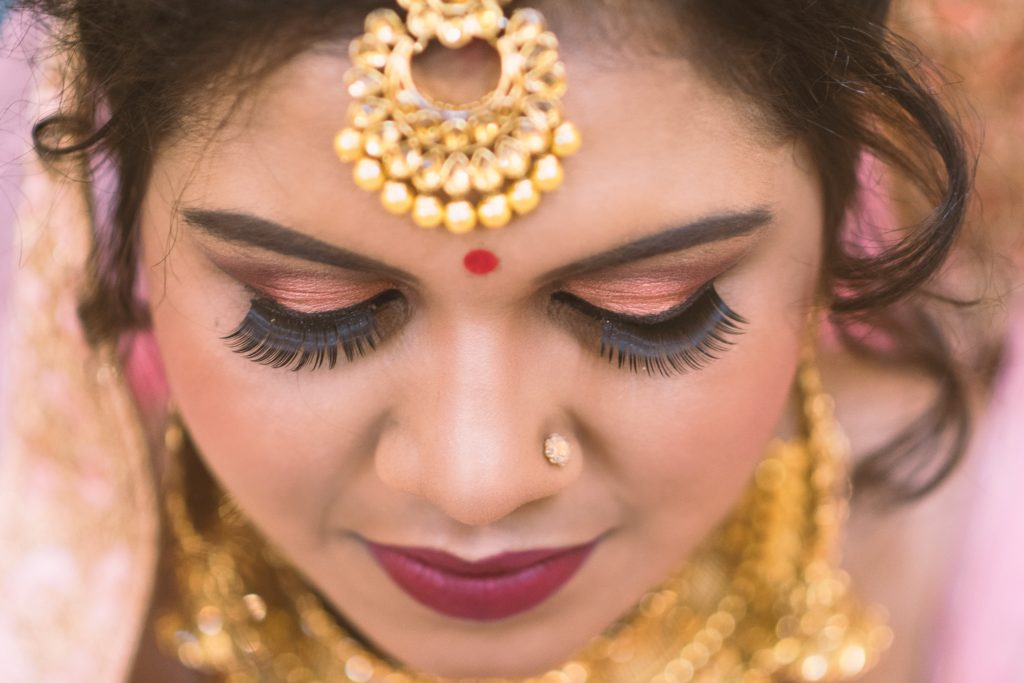
My Serendib vest (inspired by a trip to Sri Lanka, where the numerous Indian minority of Tamils have a big influence on the visual arts) contains 211 of them. My friend Zuzi is modeling the vest in my favorite Indian restaurant in Bratislava, in front of a traditional door – they fed me nearly every day while I was running my bead shop for six years in the Slovak capital on the same street 😀


7/ Stacked bangle bracelets
The more, the better 🙂 Colours and width can be combined freely.
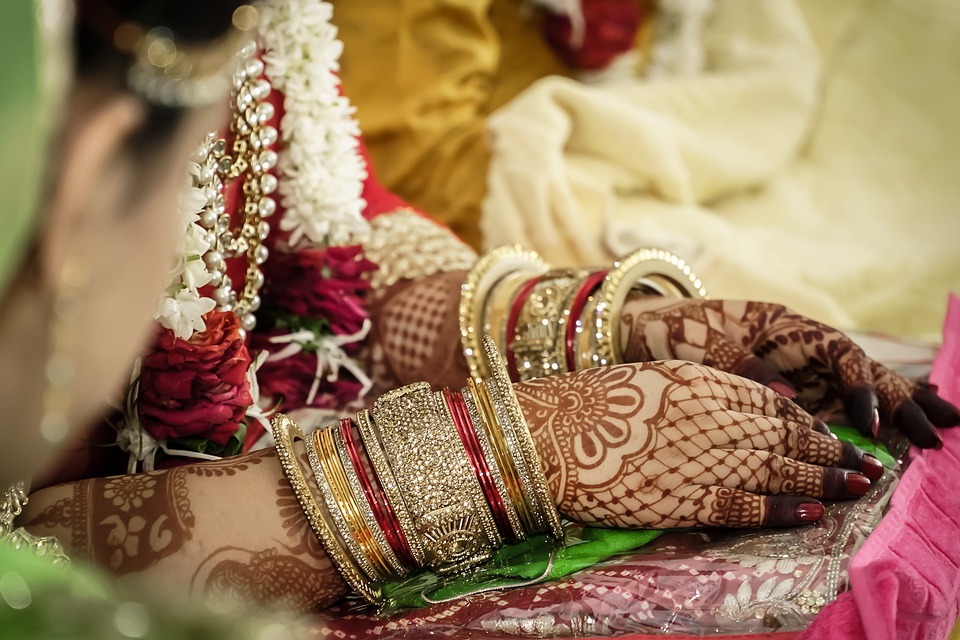
One of my designs that looks really good when worn in stacks is the Pomegranate bracelet. It’s sturdy and full of Cubic Zirconia cabochons! I love to use these cabs, as the special, multi-faceted cut makes them look luxurious.

8/ Concentric circles – ‘Mandala’
Mandala originally in Sanskrit meant “circle”. It symbolizes the unity, that life is never-ending and all is connected. “The first level is understanding the unity in cosmos and secondly each individual must find their own place within it. (…) Mandalas have many uses apart from meditation as the designs are meant to remove irritating thoughts and allow the creative mind to run free as well as relaxation.” (https://indimode.com/blogs/news/designing-the-mandala-and-its-meaning) In mandalas, different patterns can be used, motives of flowers, birds, circles, triangles – anything that appeals to you, really. Coloring a mandala is meant to unload the weight from your shoulders, caused by stress, and to express creativity.

Beading around and around can also be very relaxing! The Lemonade necklace (workshop only project in Amsterdam and the Bead&Button Show) makes you
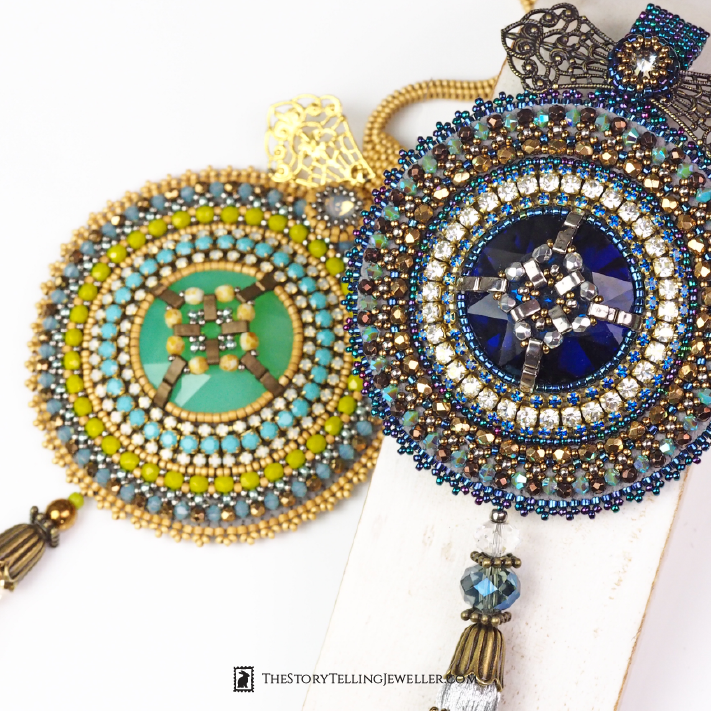

9/ Mixing of metals
Deep down at the back of my mind there are still some of the traditional “fashion advice ” given in the small village where I grew up. (They are ignored, but I remember them.) For example, never wear blue with green. And even more important: don’t mix different kinds of metals. Several thousand kilometers from us 1.3 billion Indians ignore this rule. Look at the result, it’s absolutely beautiful, isn’t it?
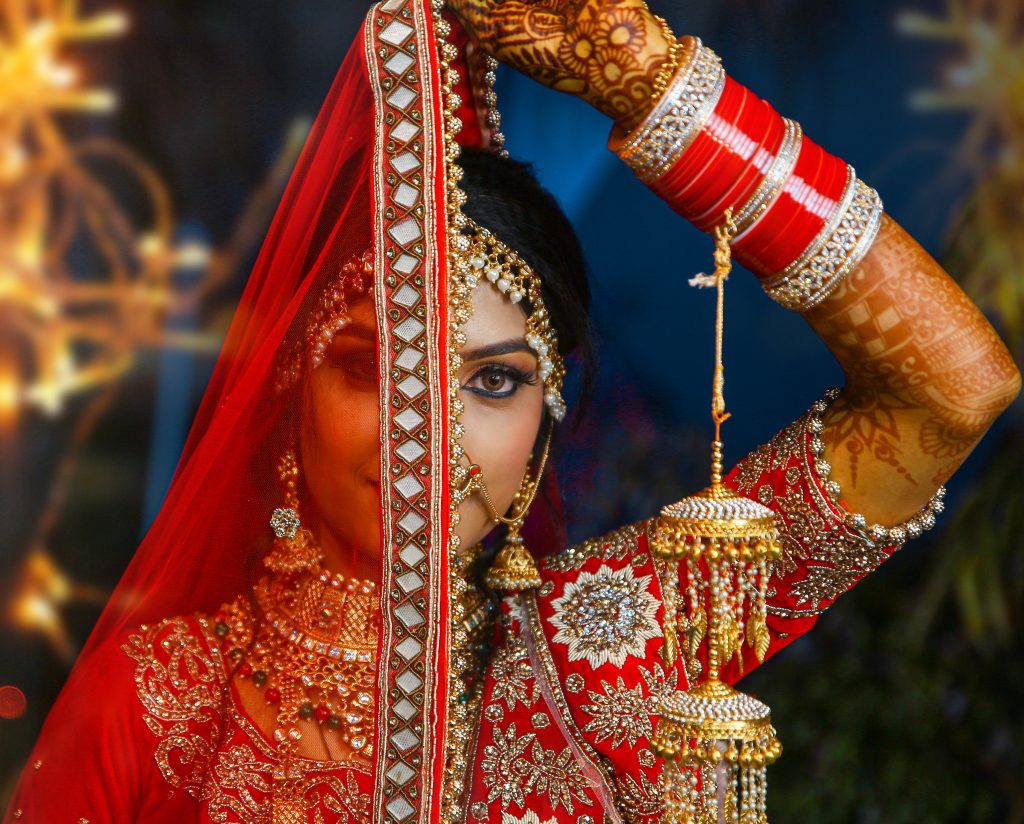
In the Indira bracelet bronze and silver, matte and shiny, white, deep ruby red and mint green all together result in a design worthy to use the name of India’s famous leader.
India is a beautiful country of 1000 colors, architecturally rich beyond imagination, the smell of flowers and spices is intense. India certainly never stops to amaze and inspire me!

![]()
Sign up to my newsletter if you don’t want to miss articles like this in the future and would like to receive some free tutorials from me:
Sources:
http://www.urbanagendamagazine.com/floral-patterns-of-india/
https://en.wikipedia.org/wiki/Paisley_(design)
https://www.craftsvilla.com/blog/shisha-the-art-of-indian-mirror-work/
https://bharata.hu/tanulmanyok/indiai-ekszerek/
https://indimode.com/blogs/news/designing-the-mandala-and-its-meaning


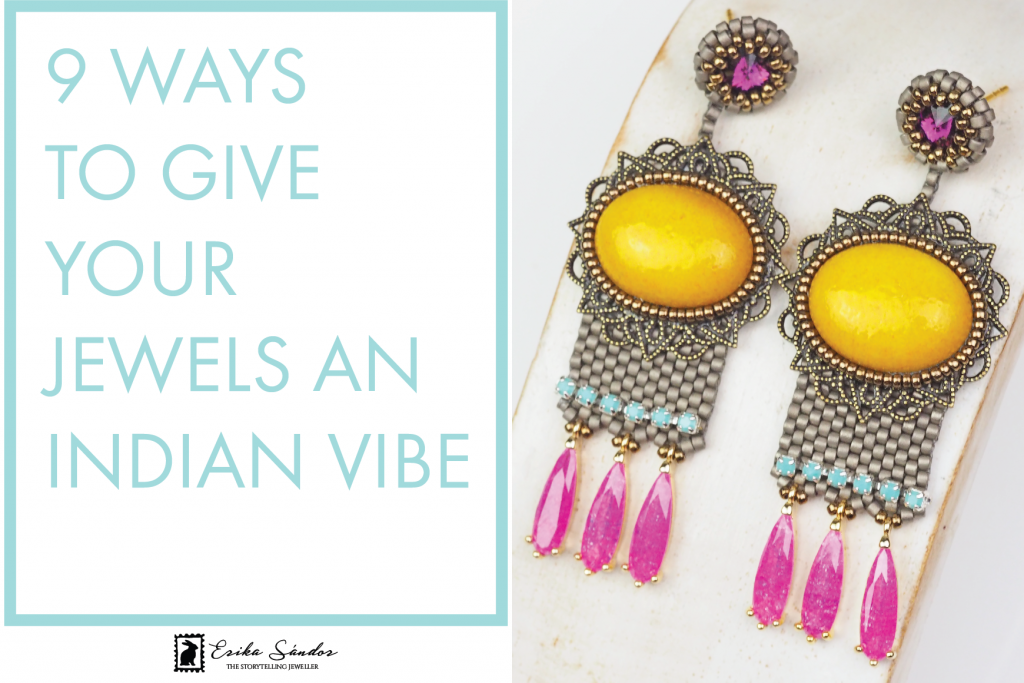
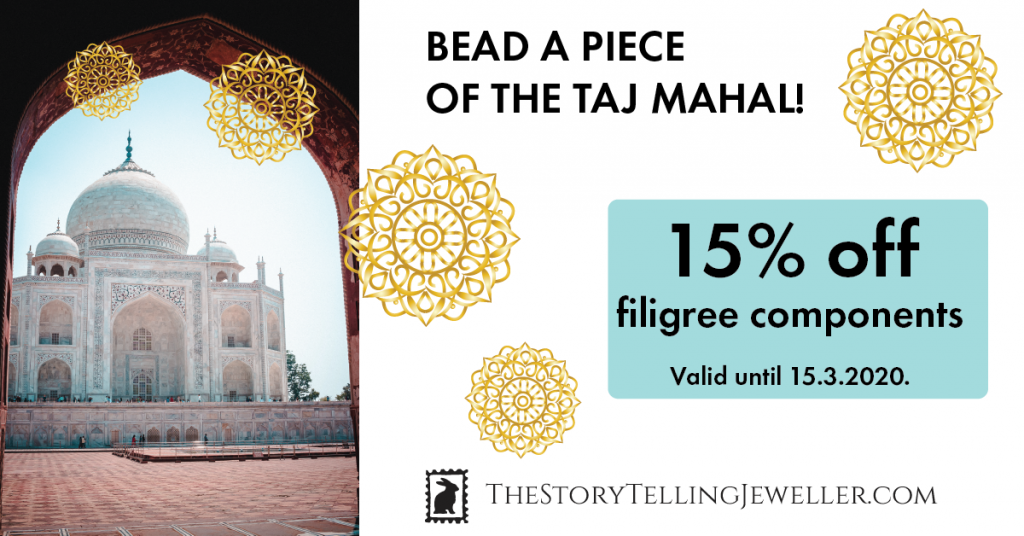
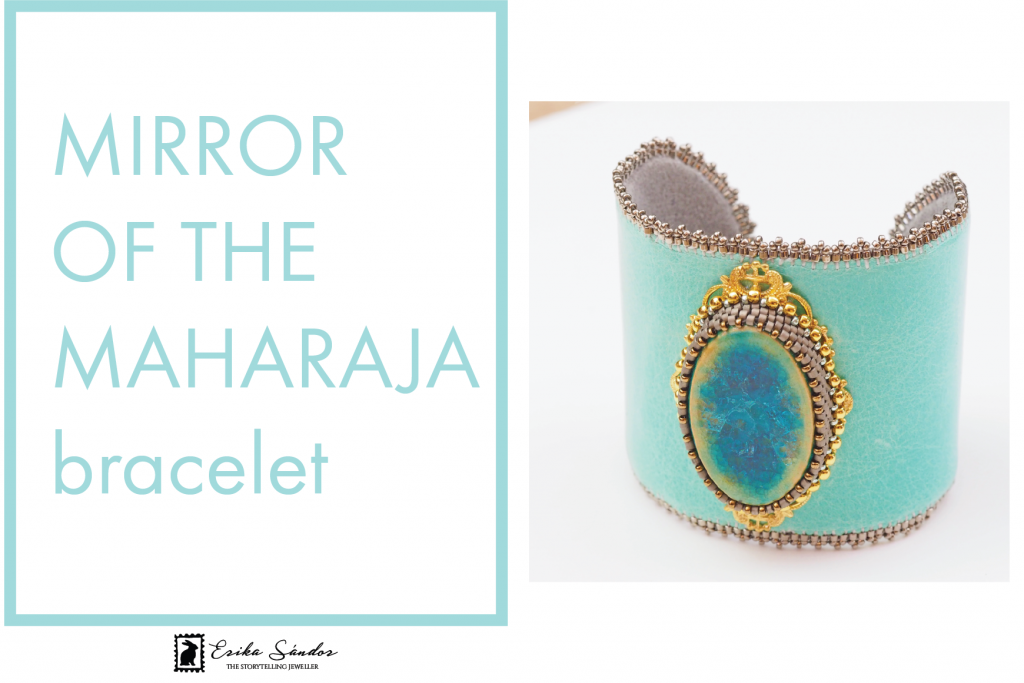

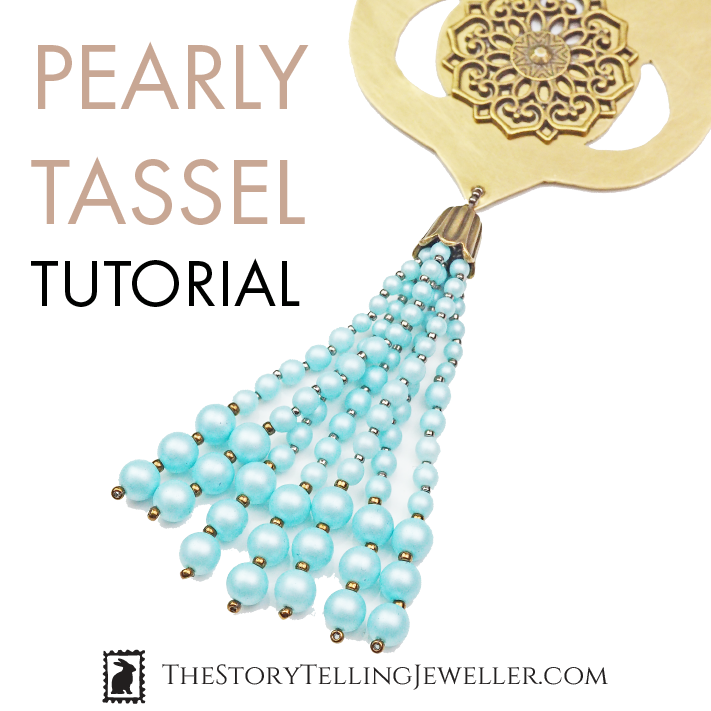
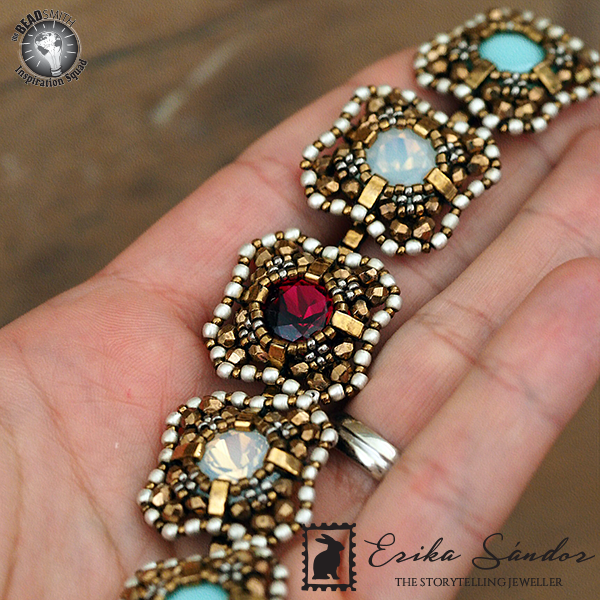
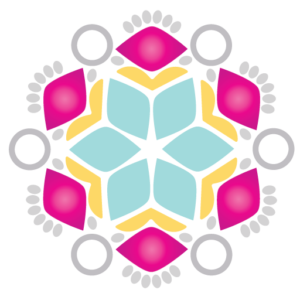
Leave a Reply